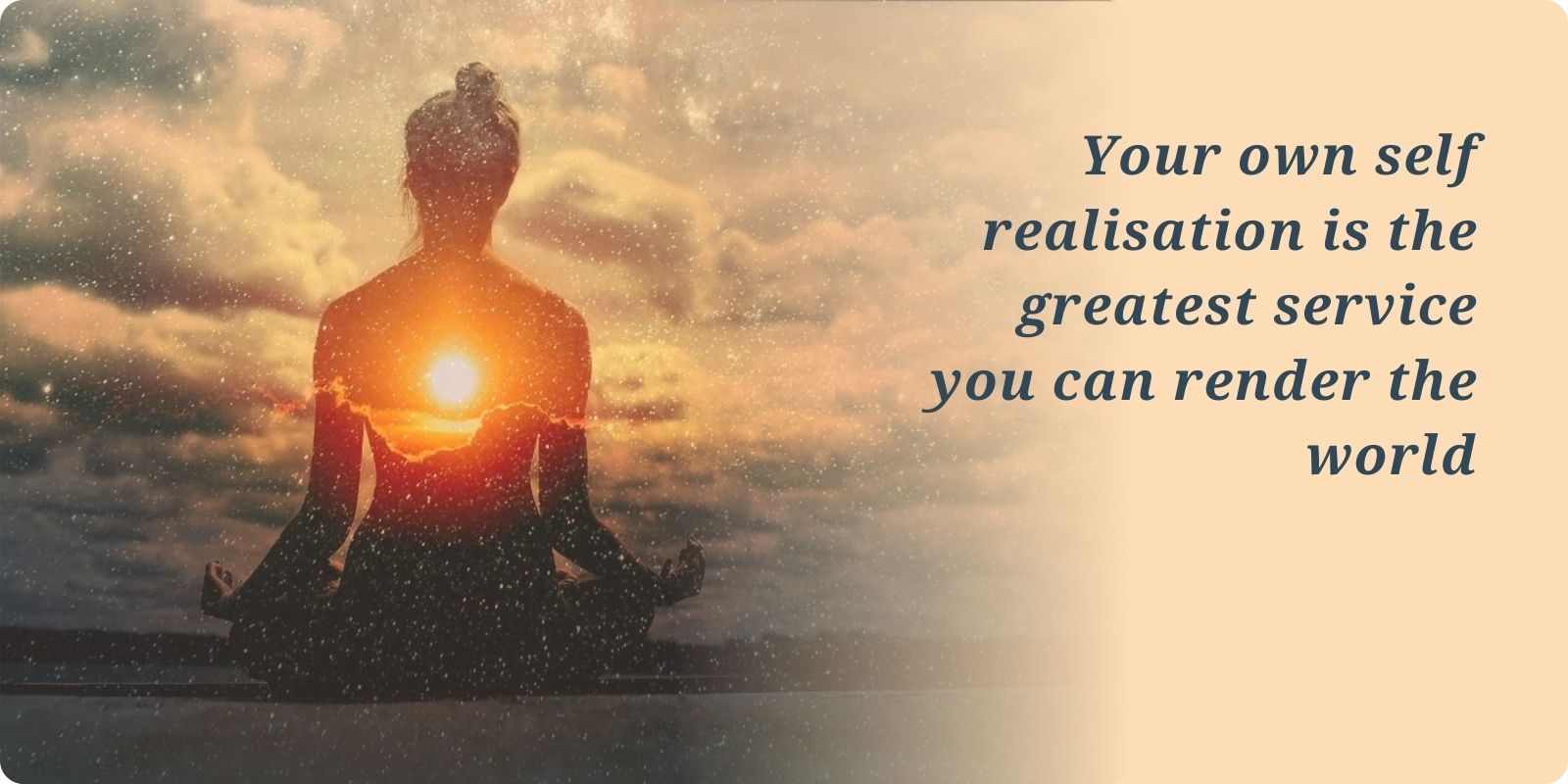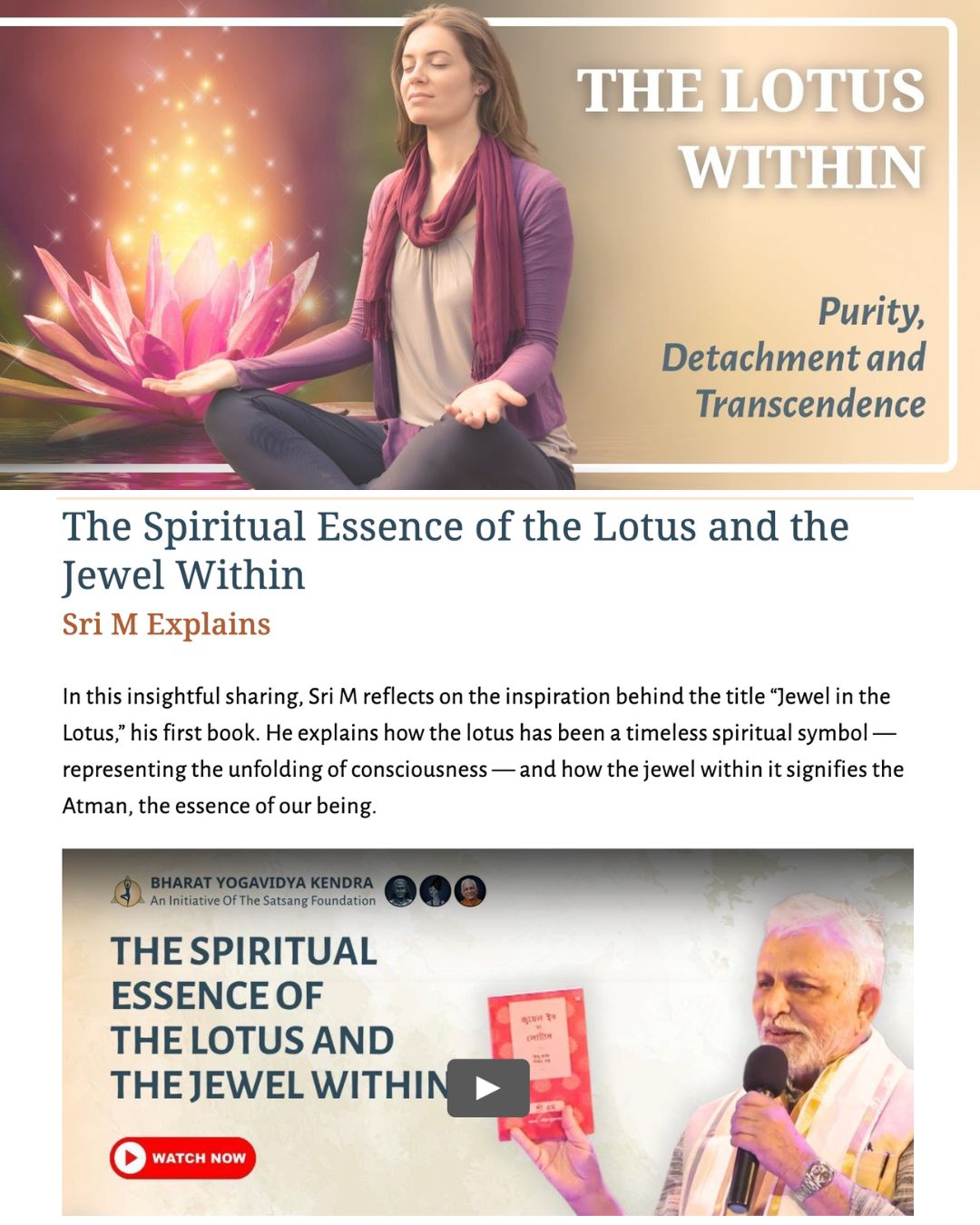Guru Tattva: Guiding Inner Light
“गुरुर्ब्रह्मा गुरुर्विष्णुर्गुरुर्देवो महेश्वरः। गुरुः साक्षात् परब्रह्म तस्मै श्रीगुरवे नमः॥”
“gururbrahmā gururviṣṇurgururdevo maheśvaraḥ, guruḥ sākṣāt parabrahma tasmai śrīgurave namaḥ.”
The Guru is Brahma, the Creator; Vishnu, the Preserver; and Maheshwara, the Destroyer. Indeed, the Guru is the embodiment of Supreme Consciousness itself. To that revered Guru, I offer my salutations.
Guru Poornima invites us to contemplate Guru Tattva—the profound essence behind the manifest form of the Guru. As beautifully expressed in this ancient shloka, the Guru principle encompasses the divine energies of creation, preservation, and transformation, guiding the seeker from ignorance to enlightenment.
Sri M often reminds us that the Guru’s highest function is to lead us inward, illuminating the path to our own Self-realization. The Guru is not confined to a physical form; rather, it manifests as an inner light, a divine presence nurturing our spiritual evolution.
Through Guru Tattva, we understand that true guidance lies in awakening our inherent wisdom. The Guru inspires, supports, and gently guides us toward discovering the eternal Self within. On this auspicious Guru Poornima, let us renew our reverence and gratitude toward this sacred principle, committing ourselves to deeper inquiry, awareness, and inner growth.
Om Tat Sat.
Look for the Jewel (Guru) within you (lotus)
Sri M Explains
In this insightful video, Sri M delves into seeking our Guru.
Talk with M
BLOG POST
Guru Deva: Igniting & Guiding the Inner Flame
Arjuna and Duryodhana visited Lord Krishna to enlist his help for the Kurukshetra war. He offered his army (Narayani Sena) and himself, unarmed, to either side, Duryodhana chose the mighty Narayani Sena army. While Arjuna was thrilled to have Lord Krishna as his charioteer. Krishna’s presence and guidance were instrumental in shaping the war’s course and ultimately, its outcome. The word ‘Guru’ has a deep meaning. Gu in Guru means Darkness and Ru means Light. So a Guru is an embodiment of the divine light who dispels darkness from our lives.
The Dakshinamurti Stotram by Shankaracharya contains some of the most profound teachings of Advaita Vedanta. This transformative knowledge is capable of destroying the Mula Avidya (fundamental ignorance) that is the ultimate cause for all suffering. Thus the Dakshinamurti Stotram is Moksha Shastra…
BOOK REVIEW
Radha – Diary of a Woman’s Search
by Chitra Ganesh
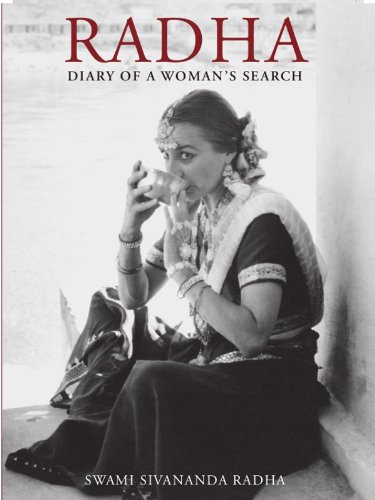
As the title suggests, this book by Swami Sivananda Radha is an honest account of a spiritual seeker’s journey. It is especially valuable for women facing doubts on the path.
The book traces her life from her early years in war-torn Germany and her involvement with modern dance in Canada, to the turning point when a vision of Swami Sivananda leads her to Rishikesh.
Her six months of intense training under his guidance result in deep transformation. The narrative highlights the teacher–disciple relationship and the discipline it demands. She shares her early discomforts in India, including sleepless nights, bedbugs, spicy food, crowded travel, and visible poverty. Though her first meeting with Swami Sivananda is quiet, she feels a strong sense of connection.
In the ashram, emotional turmoil surfaces, and her confidence weakens. Through satsangs and observing her Guru, she gradually regains clarity. She is supported by other disciples, yet often struggles. Her questions lead to important lessons. Swami Sivananda teaches her to listen with the heart and trust in the Divine.
The book culminates in her sannyasa initiation. Swami Sivananda asks her to take his teachings to the West and assures her that where there is Divine work, there will be Divine support. A meeting with Babaji deepens her awareness. The book ends with Swami Sivananda’s farewell, reminding her that yoga is not in miracles but in peace, joy, and service.
YOGA GUIDE
Guru-Tattva: The Inner Flame of Guidance
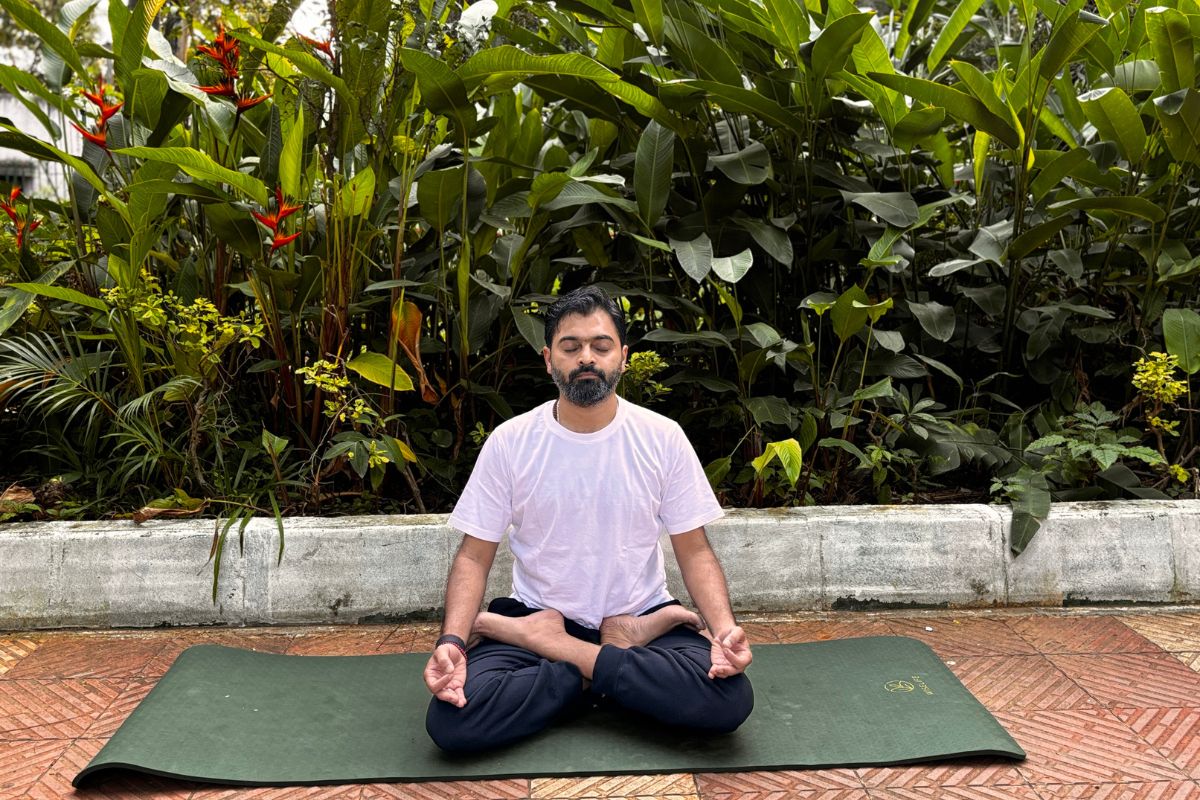
Asana: Padmasana (Lotus Pose)
Benefits:
- Promotes mental clarity and focus.
- Encourages a sense of calm and inner peace.
- Opens the hips and stretches the knees and ankles, preparing the body for meditation.
How to Practice:
- Sit on the Floor:
Begin by sitting on the floor with your legs extended in front of you. - Bend the Right Knee:
Bring your right foot to your left thigh, placing it as high up on the thigh as is comfortable. - Bend the Left Knee:
Next, bend your left knee and bring your left foot to your right thigh, again placing it as high as is comfortable. - Position Your Hands:
Rest your hands on your knees, palms facing up or in a mudra of your choice (like Gyan Mudra). - Maintain a Straight Spine:
Sit up tall, keeping your spine straight and shoulders relaxed. - Stay in the Pose:
Hold this position for 5-10 minutes, focusing on your breath and allowing your inner flame of guidance to shine.
Pranayama: Nadi Shodhana (Alternate Nostril Breathing)
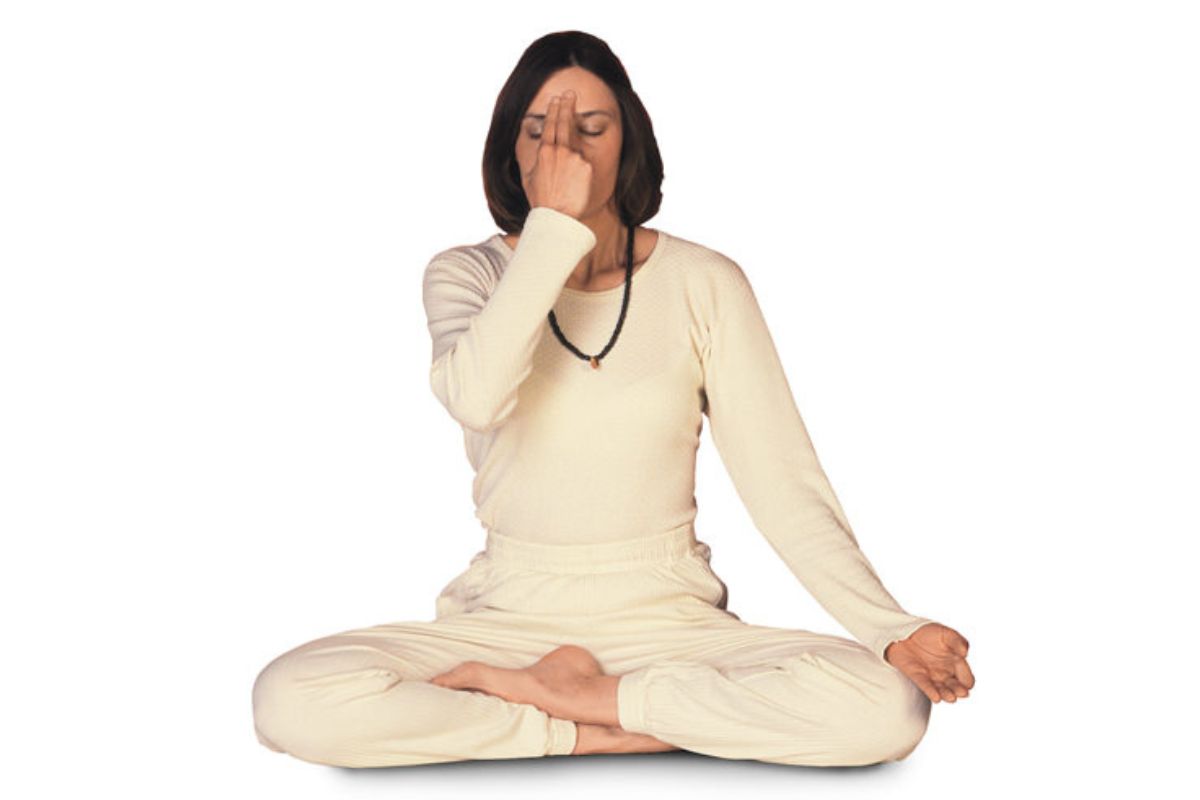
Benefits:
- Balances the left and right hemispheres of the brain.
- Calms the mind and reduces stress.
- Enhances concentration and mental clarity.
How to Practice:
- Find a Comfortable Position:
Sit in a comfortable position, such as Padmasana or Sukhasana (Easy Pose). - Prepare Your Hand:
Use your right thumb to close your right nostril and your ring finger to close your left nostril. Your index and middle fingers can rest on your forehead or be folded into your palm. - Inhale through the Left Nostril:
Close your right nostril with your thumb and inhale deeply and slowly through your left nostril. - Close the Left Nostril:
At the top of your inhale, close your left nostril with your ring finger and release your right nostril. - Exhale through the Right Nostril:
Exhale slowly and completely through your right nostril. - Inhale through the Right Nostril:
Inhale deeply through your right nostril. - Close the Right Nostril:
Close your right nostril with your thumb, release your left nostril, and exhale through the left nostril. - Continue the Cycle:
This completes one round. Continue for 5-10 rounds, maintaining a steady and calm breath.
Incorporating Padmasana and Nadi Shodhana into your practice can help you connect with your inner guidance and cultivate a sense of peace and clarity. As you practice, focus on the flame of wisdom within you, allowing it to illuminate your path. Namaste!-
Community column
Inner Consciousness
(Experts from the Teachings of Great Saints, Personification of Wisdom & Love)
“Guru Tattva” or the essence of the Guru, is fundamentally the Self, the inner consciousness, which is the source of all knowledge and guidance. While an external guru may appear to guide, the true guru is ultimately the individual’s own Self, shining as pure awareness. The guru’s role is to point the seeker towards this inner reality, leading them to self-realization.
It is counted as an offense to consider the guru’s form as material in the same way it is considered an offense to see the Arcāvigraha (Deity) as a stone piece or the Tīrtha(holy river) as ordinary water. So we worship the guru as a person and also as Tattva who is manifest as samaṣṭi guru in the spiritual world.
The Guru is both ‘external’ and ‘internal’. From the ‘exterior’ he gives a push to the mind to turn inward; from the ‘interior’ He pulls the mind towards the Self and helps in the quieting of the mind. That is guru kripa (grace). There is no difference between God, Guru and the Self.
FINDING A GURU : It is not a question of the disciple selecting the Guru. He on the other hand gravitates towards the Guru and he will find exactly the Guru he needs for his present state of mental development. But understand that the only Guru is he, the Lord who expresses in many forms.
If you find peace in the presence of a Mahatma, if you are inspired by his speeches, if he is able to clear your doubts, if he is free from greed, anger and lust, if he is selfless, loving and I-less, you can take him as your Guru. he who is sympathetic in your Sadhana, he who does not disturb your beliefs but helps you on from where you are, he in whose very presence you feel spiritually elevated—he is your Guru.
Watch Yourself. If you see yourself changing, growing it means you have found the right Guru. He may be beautiful or ugly, Pleasant or unpleasant, Flattering or scolding you, but nothing matters except the crucial fact of inward growth. If you don’t he may be your friend, but not your Guru.
Once you choose your Guru, implicitly follow him. God will guide you through the Guru. Open your heart to him with all sincerity and fidelity manifesting clearly and explicitly the state of your conscience without any friction or dissimulation . By this means your good actions will be examined and approved and the evil ones will be corrected and remedied.
Guru-Kripa, grace of the Guru, is very necessary. But the whole work must be done by the student. He must do rigid Purushartha, spiritual practices. A Guru can be pleased with his disciple only if the latter carries out his spiritual instructions implicitly. Carefully follow, therefore, the instructions of the Guru. Act up to his instructions. Then only will you deserve his blessings, and then alone his blessings can do everything.
But until you realise yourself, you cannot know who’s your real Guru. When you realise, you understand that all the Gurus you have had contributed to your awakening. Your realisation is the proof that your Guru is real.
. The Guru who shows the path of Realisation is the Diksha Guru. Siksha Gurus who teaches the worldly arts can be many—as many as the things he wishes to learn. Diksha Guru can be only one—the one who leads him to Moksha.
STICK TO ONE GURU. Listen to all, but follow one. Respect all, but adore one. Gather knowledge from all, but adopt the teachings of one Master. Then you will have rapid spiritual progress.
Having found him,, Bless his divine majesty. Remain constant and seek no other and proceed on with sincerity, humility and confidence for you will make a most HAPPY JOURNEY.
YOGA RESOURCE
Inner compass of clarity
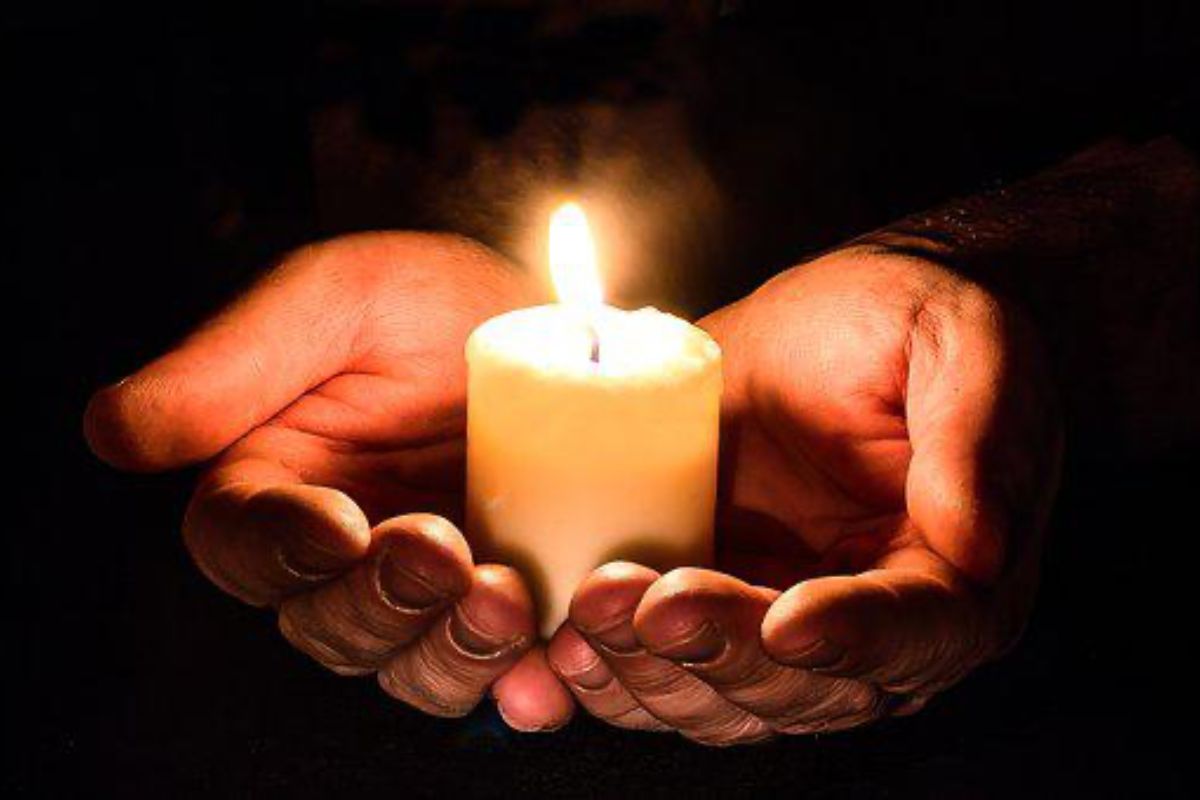
“What is Guru or who is Guru? Guru is not a person. Guru is the omnipresent consciousness which pervades everywhere, which guides the entire universe constantly. But because the Guru is within you, and you have never seen it, you want to see it with a reflection.
The Guru holds up the mirror showing your face. The mirror doesn’t have a face of its own. It simply reflects your face. Because unfortunately no one has seen his or her own face. Like that, you are the Guru. The conscience within you is the Guru. The one that guides you. The one that enlightens you. As such, there is a Guru in everybody.”
Sri Swami Satchidananda said this very clear statement.
Tattva means Essence, so Guru Tattva means the Essence of the Guru. In this video, Om Swami describes the same thing stated. When we understand the essence of our Being, that is in the beginning, for most of us, covered by layers of conditioning, we have the capacity for a very clear communication within. It is why we do Sadhana, to clear the muck away from the pure reflection of our real Self, and when it happens, we will understand the Guru Tattva properly.
Om Swami also mentions that the Guru is the happiest when he is not needed anymore, when the student have himself become a master and is ever free. The genuine Guru wishes for the student to find it himself. That is also where we have to be cautious so that we do not become dependent on the Guru, and to be aware if any Guru that we follow wants us to be dependent on him.
And to go a little more into the current topic, here is a list of three videos where Sri M explains the significance of the Guru, both Inner and Outer.
TESTIMONIALS OF TRANSFORMATION
ONLINE TTC
Sep to Dec 2024
I had wanted to take a TTC (Teacher Training Course) for ten years, but my work schedule always got in the way. When I discovered that BYK was offering a fully online TTC-1 program, I was thrilled and immediately signed up. From the moment the course began, I felt like the days should never end—learning was so engaging and enjoyable.
By the time the course finished, I had built a strong foundation in Ashtanga Yoga and couldn’t wait to try out everything I’d learned. I was also initiated into Kriya practice; after completing TTC-1, practicing Kriya felt even more meaningful because I understood its roots and purpose.
The teaching throughout the program was outstanding. The instructors were deeply committed and always willing to go the extra mile to help, even with the smallest questions. Before TTC-1, I struggled with various health issues, but now I rarely get sick. My body feels much more energetic, and my overall concentration has improved significantly.
Thanks to the course, I’m now familiar with classical Hatha Yoga texts like the Hatha Yoga Pradipika and Gheranda Samhita. I’ve also connected with many like-minded people who share my interest in the spiritual path, which has enriched my journey even further. The best part is that I can still reach out to my TTC-1 teachers whenever I have doubts—learning has not stopped just because the course is over.
I’m already looking forward to enrolling in TTC-2 with BYK sometime soon.
by Deepak T
SPOTLIGHT OF THE MONTH
Dakshinamurti
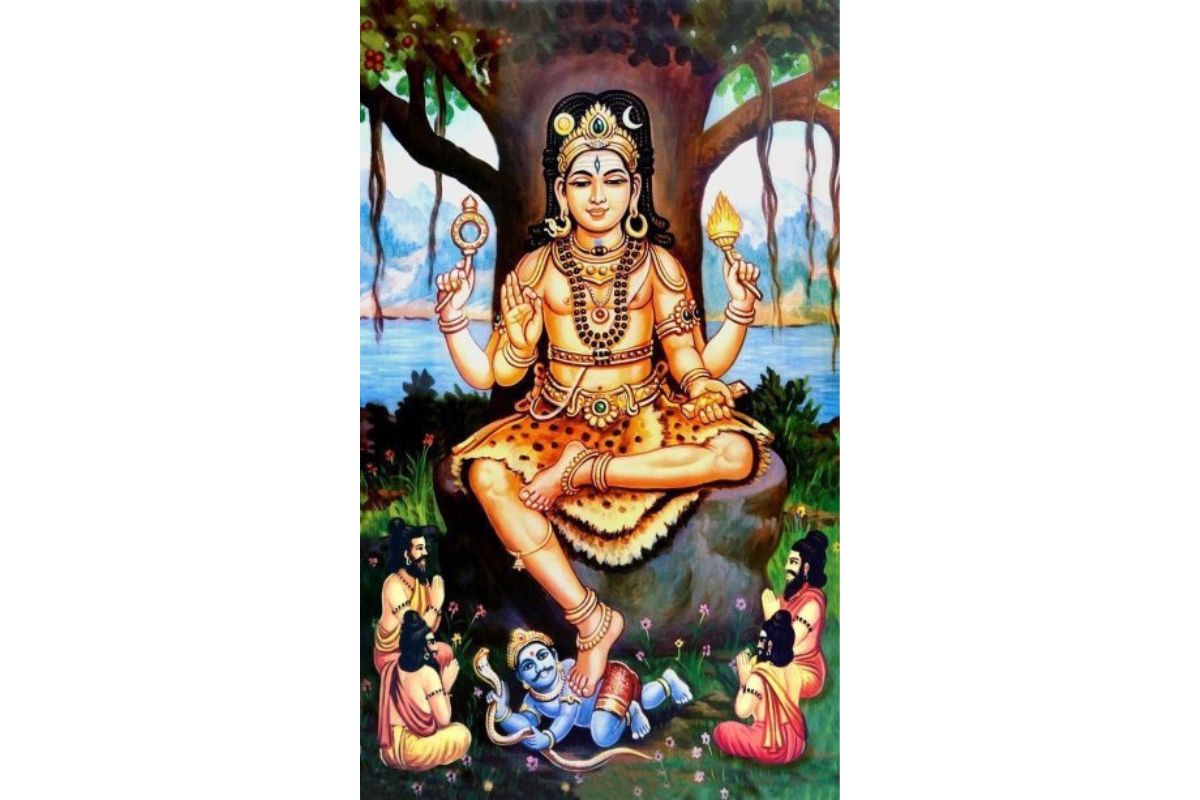
In silence, profound truths speak loudest. Dakshinamurti, the supreme Guru, exemplifies this sacred paradox. Seated serenely beneath the ancient banyan tree, Lord Shiva as Dakshinamurti embodies wisdom without words, imparting the deepest spiritual truths directly into the heart of seekers.
Dakshinamurti is not merely a deity but a potent symbol of self-realization and inner illumination. Facing south—the direction of transformation and transcendence—he signifies mastery over ignorance, guiding humanity beyond the endless cycles of birth and death.
Uniquely depicted as youthful yet infinitely wise, Dakshinamurti reminds us that true wisdom is ageless, timeless, and universally accessible. His silent discourse challenges us to look beyond intellectual comprehension, urging us instead toward direct experience of our inner divinity.
Explore the profound Dakshinamurti Stotram, composed by Adi Shankaracharya, which beautifully encapsulates the essence of non-duality and invites us into the silence from which all wisdom emerges. Let Dakshinamurti’s silent teaching inspire you to reflect, meditate, and awaken to the infinite potential residing within.
Om Namah Shivaya.
Ayurvedic Wisdom
The Healing Power of Inquiry

In Ayurvedic tradition Guru Tatva refers to the spiritual essence or the Principle of a guru, this is considered a vital aspect in aligning with the holistic principles Ayurveda.
Guru Tattva combines two aspects “Guru” a teacher or master and “Tattva” principle or the essence or truth
In Ayurveda the Guru is not just merely a teacher of medical knowledge but is a guide on the path to spiritual as well as physical well-being.
In Ayurveda the Guru embodies the wisdom and experience to guide individuals towards optimal health by balancing mind, body and spirit.
Ayurveda as a traditional system of medicine recognises the interconnectedness of physical mental & spiritual wellbeing.
The Guru’s role is crucial in facilitating this holistic approach by providing guidance & support to the individual on their healing journey.
The Guru’s role is not limited to prescribing treatments but also includes imparting individuals to live in harmony with nature and their own true nature (as described in Dinacharya, Ritucharya and Sadvritta).
On this special occasion of Guru Purnima let us offer salutations to lord Dhanvantari the Hindu God of Ayurveda and the Acharya/Rishi like Charaka, Sushrutha, Vagbatta for their valuable and priceless knowledge of Ayurveda compiled as Treatises or Samhitas.
Upcoming Courses & Retreats
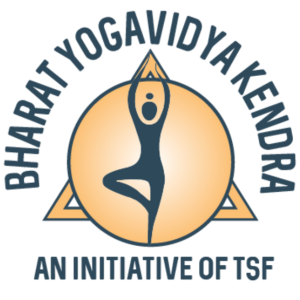
Thank you for reading
In this issue of Yogavidya, we have:
- Guru Tattva: Guiding Inner Light
- Look for the Jewel (Guru) within you (lotus)
- Talk with M
- Guru Deva: Igniting & Guiding the Inner Flame
- Radha – Diary of a Woman’s Search
- Guru-Tattva: The Inner Flame of Guidance
- Inner Consciousness
- Inner compass of clarity
- Dakshinamurti
- The Healing Power of Inquiry
- Yogavidya | BYK Monthly Newsletter

